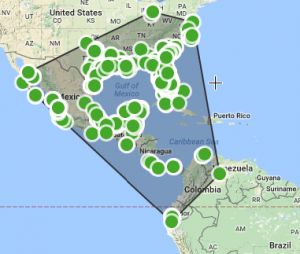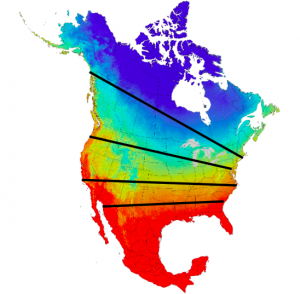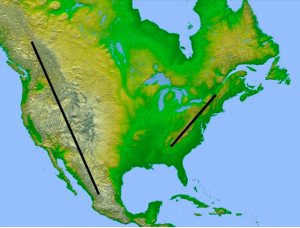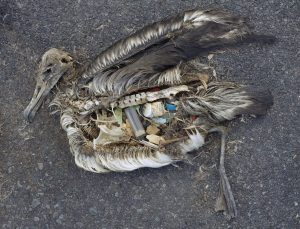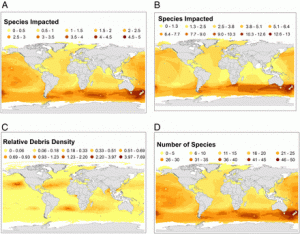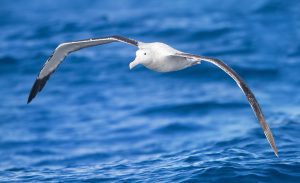Light Pollution Induces Increased Seabird Mortality
By Olivia Schuitema, SRC Intern
Light pollution has increased fiercely over the last century, resulting in mass fatality events in seabirds, one of the most endangered groups of birds (Rodríguez, 2017). This phenomenon, called “grounding,” happens when land-based artificial lights attract seabirds to the shore, causing them to crash into human-built structures such as buildings and fences (Rodríguez, 2017). Once on land, the disoriented birds (Troy, 2013) are vulnerable to predation, starvation, and vehicle collisions, leading to the mass-mortality events.
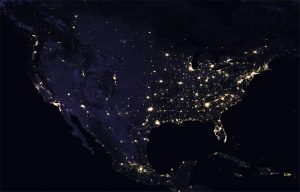
Composite image of continental U.S. at night, showing light pollution (NASA, 2016).
In reviewing current literature on the topic, data shows that twenty-four of the seabird species most likely to ground due to artificial lights are listed as “globally threatened” on the IUCN Red List (Rodríguez, 2017). A large number of the species affected are petrels and shearwaters (Figure 2). Juvenile individuals flying from the nest for the first time, or “fledglings,” make up 68%-99% of all grounding seabirds (Rodríguez, 2017). Seabird disorientation and the path where fledglings are drawn off course towards land are still uncertain (Troy, 2013), but scientists hypothesize the artificial lights drown out the natural light of the moon and stars.
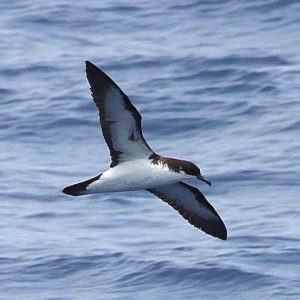
Newell’s Shearwater, Puffinus newelli (Hawaii.gov).
Three strategies can be taken to prevent the loss of seabird life: avoidance, minimization, and rehabilitation (Rodríguez, 2017). Avoidance (avoiding practices that are known to cause fatalities) can be implemented in both new and current housing developments; new developments can refrain from installing light systems associated with groundings (Rodríguez, 2017), and current communities can remove or turn off lights that are not being used. Minimization reduces the duration and intensity of artificial light on seabird individuals (Rodríguez, 2017), and can be implemented in areas of overlap between humans and seabirds. Rehabilitation is also a method used to rescue grounded birds, where stranding teams and people of the public bring individuals to designated rescue stations. Here, the birds will undergo rehab until they are in “release condition.” However, not all birds survive grounding or rehabilitation efforts, but can be used as indicators of various marine environmental conditions (Rodríguez, 2017). Long-term scientific studies can also utilize seabird carcasses to address issues such as oil pollution (Stienen, 2017).
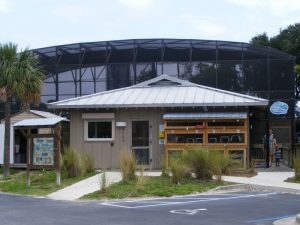
Seabird Rehabilitation Sanctuary in Ponce Inlet, Florida (Wikimedia Commons).
There is still little information known about seabird attraction to artificial lights. Scientists recommend researching the ecology and biology of vulnerable seabird populations and the effects of light intensity on grounded individuals (Rodríguez, 2017). New classes of lights that are useful for humans, but safe for seabirds can also be explored (Troy, 2013). Overall, seabirds are of great ecological importance and have ecotourism value that support many local economies. As light pollution increases, seabirds are continually at risk of grounding, leading to possible mass-mortality events.
Works Cited
Rodríguez, Airam, Holmes, Nick D., Ryan, Peter G., Wilson, Kerry‐Jayne, Faulquier, Lucie, Murillo, Yovana, . . . Corre, Matthieu Le. (2017). Seabird mortality induced by land‐based artificial lights. Conservation Biology, 31(5), 986-1001.
Stienen, Courtens, Van de Walle, Vanermen, & Verstraete. (2017). Long-term monitoring study of beached seabirds shows that chronic oil pollution in the southern North Sea has almost halted. Marine Pollution Bulletin, 115(1-2), 194-200.
Troy, J., Holmes, N., Veech, J., & Green, M. (2013). Using observed seabird fallout records to infer patterns of attraction to artificial light. Endangered Species Research, 22(3), 225-234.


